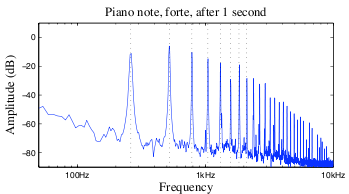Question 1: What is an overtone?
Initially let’s clarify the term. The nomenclature overtone is used primarily in the “world” of musical acoustics. This is because there is some cross-disciplinarity with music and musicians are more familiar with tones (which is informally related to the fundamental frequency - tonality) and harmonics.
The harmonics or overtones (one and the same) are the natural frequencies supported by a system, an open-closed tube in our case. The equation you provide is valid for an ideal lossless system, which is usually used as a first approximation to systems in musical (and not only) acoustics.
For practical systems with losses, the pressure amplitude will be maximised when the system is excited at these frequencies. Please note that the system can be excited in all frequencies. The excitation frequency depends solely on the external force that acts as the “cause of excitation”. However, at the natural frequencies, the system will exhibit resonant behaviour, and the pressure amplitude will be maximised. This least to the characteristic peaks in the spectrum of tonal instruments, such as that shown in the figure below (spectrum of a piano, taken from: http://www.met-lab.org/magnetic-resonator-piano/).

Question 2: Is the $0 \textrm{th}$ overtone the fundamental?
Based on the “definition” of the overtone provided above, the $0 \textrm{th}$ overtone does not make much sense, but it does coincide with the fundamental frequency. Essentially, if two people agree to call the fundamental the $0 \textrm{th}$ overtone then it would make perfect sense (to them).
Now, the term $0 \textrm{th}$ overtone is “valid” in the sense that in the equation you provide $n$ can take any non-negative integer value. Thus, $n = 0$ is a perfectly valid value, which leads to the term $0 \textrm{th}$ overtone. But, the same equation could be written like
$$ f = \frac{m v}{4 L}, \quad \quad m = 1, 3, 5, 7, \ldots \tag{1} $$
What has changed here is the fact that there are only odd-valued harmonics/overtones incorporated in the possible values of $m$. The reason I used $m$ is to make clear that the allowed values are not the same as in your equation. The results you get though, are identical to the equation you provide. However, the notion of the $0 \textrm{th}$ overtone does not come naturally.
It may have been a long intro but the point I want to make is that the numbering of overtones is not always so clear and quite often depends on the context. For example, many times, people who do not deal with musical acoustics use equation \eqref{1} and denote the harmonics as $1^{\textrm{st}}$, $3^{\textrm{rd}}$, $5^{\textrm{th}}$ and so on, instead of $1^{\textrm{st}}$, $2^{\textrm{nd}}$, $3^{\textrm{rd}}$, etc.
Remark
Please note that what is shown in the figure you provide are not the modes of an open-closed (or one-sided open as you call it) tube or similarly a fixed-free string. The amplitude of the depicted quantity cannot be the same at the two boundaries for such a system as the boundary conditions are different. The pressure amplitude for a closed-open/fixed-free one-dimensional system is shown below (taken from: https://phys.libretexts.org/Bookshelves/Waves_and_Acoustics/Book%3A_Sound_-An_Interactive_eBook(Forinash_and_Christian)/11%3A_Tubes/11.01%3A_Standing_Waves_in_a_Tube/11.1.01%3A_Tube_Resonance).

As you can see, at the closed end (right-hand side), the pressure is maximum as the movement/displacement of air “particles” is restrained at the boundary. This causes particles to concentrate at the boundary effectively resulting in a pressure maximum. On the open end (left-hand side) where the boundary is an open/free boundary the air “particles” are free to move and so the pressure there is at its minimum.




